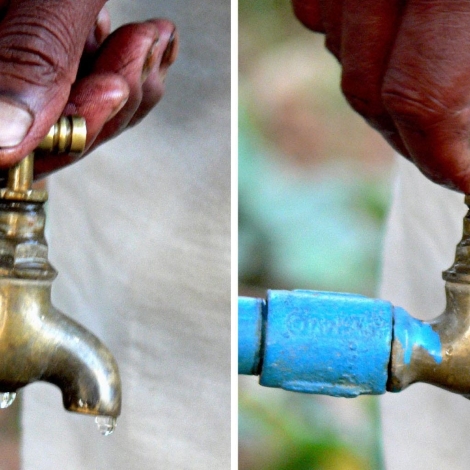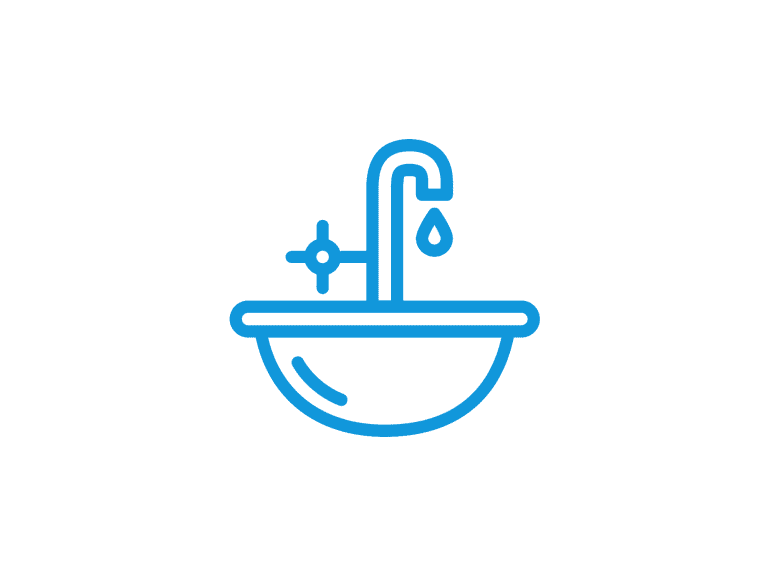A new set of survey questions may address a longstanding problem in the work to deliver clean water to those who need it worldwide. Until recently, it has been hard to determine who needs water and where water insecurity exists. It has also been hard to quantify the need for water and to understand how the need manifests, when insecurity occurs and, importantly, whether or not interventions are having their intended impact.
Now, an international team of researchers led by Dr. Sera Young at Northwestern University in Evanston, Illinois (USA), has developed a short, 12-question survey to evaluate water insecurity. The survey, called the Household Water InSecurity Experiences (HWISE) Scale, makes it possible to quantify household water insecurity, including experiences of having too little or too much water.
Two members of the research team, Vidya Venkataramanan and Joshua Miller, also at Northwestern University, presented results from their work to validate the the HWISE Scale’s questions on March 5th at the Colorado WASH Symposium in Boulder, Colorado (USA).

This excerpt from a presentation slide about the HWISE Scale shows examples of the questions and their format. Image courtesy of Joshua Miller
The researchers sought to create a tool that is as universal as possible. They wanted to find out which questions could yield the necessary information when used just about anywhere in the world. To test their scale, they implemented it in 28 sites in 24 countries, involving a nearly 8500 people in total. The tests were to ensure that the tool is sensitive to different ecologies, water infrastructures, and experiences of both water scarcity and flooding, the researchers said.
Before the HWISE Scale, aid organizations and social ventures that wanted to understand a region’s experience with water insecurity had to cobble together surveys from questions developed for specific regions around the world, or they had to develop their own. Those scales are rooted in their unique context and not universally applicable. They have provided valuable insights, but the measurements they made cannot be compared across studies or sites of implementation. In other words, their cross-cultural equivalence has not been established, which is necessary when measuring global progress towards universal access to safe water (Sustainable Development Goal 6.1).
The 12 questions of the HWISE Scale were whittled down from 32, a test set gleaned from established surveys and agreed upon by water security experts who the researchers consulted. As such, the 12 may represent a stripped down, efficient tool for assessing water insecurity. Not bloated by ineffective questions, and not likely to lack questions that could provide important information. That process yielded some surprises to Dr. Young. One that was cut, for example, inquired about maternal child health.
The final set of 12 questions were gleaned from an initial set of 32. Through repeated tests, the researchers dropped questions that were redundant, not universally experienced, or failed to capture experiences of water insecurity. In short, the final scale is not bloated by ineffective questions.
The questions that remain each begin with the same phrase, “How often in the last month have you or anyone in your household…” Some ask about feelings, such as, to paraphrase, ‘how often have you felt angry about your water situation.’ And some address specific occurrences, such as, ‘how often have you not had enough water to wash clothes?’
The process of cutting out questions yielded some surprises to Dr. Young. One that was dropped, for example, inquired about maternal child health.
“I care a lot about maternal child health, but not everyone has children,” Dr. Young said by phone. So, when field tests and statistical analyses revealed that the question was not as helpful as others, the researchers took it out.
Similarly, questions dealing with crops and livestock were removed since many households do not engage in agriculture. But the tool is designed for customization. Along with the final set of 12 items, those administering the scale can add questions depending on their goals.
“We encourage people to – if you care about crop production for smallholder farmers, for example – you should add those questions back in,” Dr. Young says.
The researchers discuss the tool in the context of the broad body of research into food insecurity.
“The development of tools to equivalently measure household food insecurity have transformed our understanding of food insecurity (the inability to reliably access preferred foods in sufficient quantity) and have ushered in new solutions to address this global health issue. However, no analogous household water insecurity tools existed before the development of the HWISE Scale,” Mr. Miller says in a note to E4C.
With this tool, researchers can begin to understand the linkages between food and water insecurity, Mr. Miller says. Early findings from this line of research suggest that water insecurity predicts food insecurity.
“By implementing these two metrics in nationally representative surveys, along with other health and economic data, we will be able to develop new technologies, infrastructure, and programs that effectively address both of these interrelated, mutually exacerbating issues,” Mr. Miller says.
The survey may also serve as a test for the efficacy of water services and other interventions. It could help evaluate new products in development, which may be of interest to product designers and social entrepreneurs seeking to test a prototype, Dr. Young says.
The researchers published a paper detailing their development and validation protocol for the scale in the open-access journal BMJ Open. And a new paper on the HWISE Scale’s validity and cross-cultural equivalence is under review. Pending that paper’s publication, Dr. Young has offered to provide the scale, along with the necessary information to implement it, upon request.
Please find her contact information on her page on Northwestern University’s website. And follow HWISE on twitter @HWISE_RCN and Dr. Young @profserayoung.

